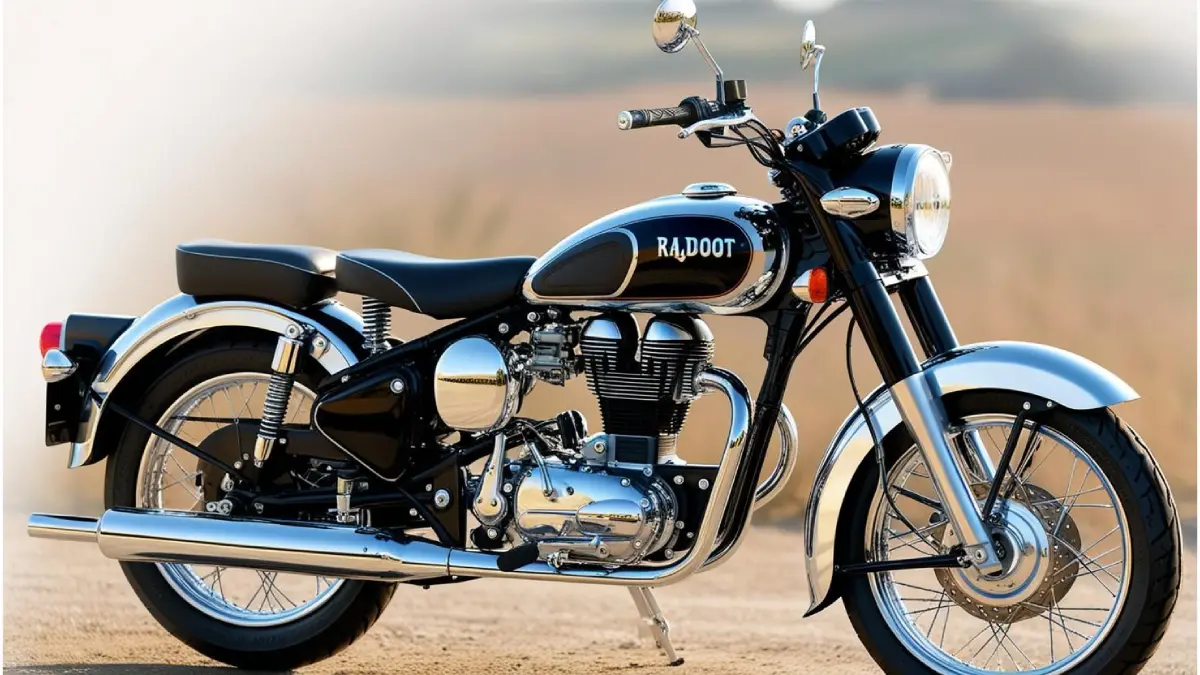
If you grew up for the duration of the 1980s or 1990s, probabilities are you continue to recall the robust Rajdoot 350 — a bike that after ruled Indian roads with unrivaled energy and reliability. Known for its rugged construct and roaring engine, the Rajdoot turned into a true icon long earlier than today’s cutting-edge motorcycles hit the scene. Now, the legend is coming round again, and it’s prepared to remind anybody why it earned the sort of sturdy popularity within the first place.
Let’s dive into what makes the Rajdoot 350 a classic worth revisiting.
1. Bold, Timeless Design
The Rajdoot 350 was not about sleek styling or flashy details. It had a raw, muscular look that made it stand out. With tall handlebars, a long padded seat, and a solid fuel tank, the bike commanded attention. Offered in bold shades like red, black, and blue, it carried a simple yet powerful aesthetic. Unlike today’s digital-loaded machines, the Rajdoot’s charm was in its straightforward, no-nonsense design.
2. A Beast of an Engine
While the name suggests a 350cc engine, the Rajdoot actually featured a 175cc two-stroke motor that packed a surprising punch. Its low-end torque made it ideal for rugged roads and carrying heavy loads, especially in rural settings. Producing nearly 14 to 15 bhp, it was considered powerful in its time. The engine’s loud, throaty exhaust note remains unforgettable to anyone who ever rode it. Paired with a 4-speed gearbox, it was simple and dependable.
3. Built Like a Tank
The Rajdoot 350 was never built for city agility — it was designed for strength and endurance. Its sturdy frame, basic suspension, and upright seating made it a favorite for long-distance travel. While its weight made it a little difficult to handle in city traffic, it shined on open roads and in the countryside, offering stability and confidence to riders.
4. No Gimmicks, Just Pure Mechanics
This was a bike stripped of any unnecessary tech. No digital meters, no electric start, and certainly no modern braking systems. You got an analog speedometer, drum brakes, and a reliable kick-start. But this simplicity had its perks — the bike was easy to maintain, and any local mechanic could fix it with just a few basic tools.
5. Durable Legacy That Still Lives On
The Rajdoot 350 became the go-to bike for farmers, police departments, and rural users for a reason — it was built to last. Many units are still running in small towns and villages, proving its long-lasting build quality. Even with minimal maintenance, the bike could keep going strong for years. It is not just remembered, it is still respected.
Fuel Efficiency and Practicality
Being a two-stroke machine, fuel efficiency was never its strongest point. It delivered around 20 to 25 km per litre, which was considered average during its era. Riders had to mix oil with petrol, a bit of an inconvenience by modern standards, but essential for engine health. Still, for what it offered in power and performance, the trade-off was acceptable.
Frequently Asked Questions
Why did Rajdoot stop production?
The brand struggled to keep up with newer four-stroke bikes that offered better mileage and lower maintenance, which gradually led to the discontinuation.
Are spare parts still available today?
While some parts can still be found in old garages or vintage motorcycle shops, many owners rely on aftermarket alternatives to keep their bikes running.
Final Words
The Yamaha Rajdoot 350 was never just a motorcycle. It was a symbol of strength, reliability, and simplicity. It might lack the tech-savvy features of today’s bikes, but it offers something many modern machines do not — character. For those who experienced it firsthand, it will always be remembered as India’s original powerhouse on two wheels.
If you ever get the chance to ride one, grab it — and feel the legacy come alive beneath you.

Hi, I’m Raj Malhotra, the voice behind Gehani.in. I hold a B.Com degree, but my real passion lies in exploring the ever-evolving world of automobiles and technology. Whether it’s the latest car launches, smart gadgets, or tech tips that make life easier, I love diving deep and sharing what I learn with my readers.